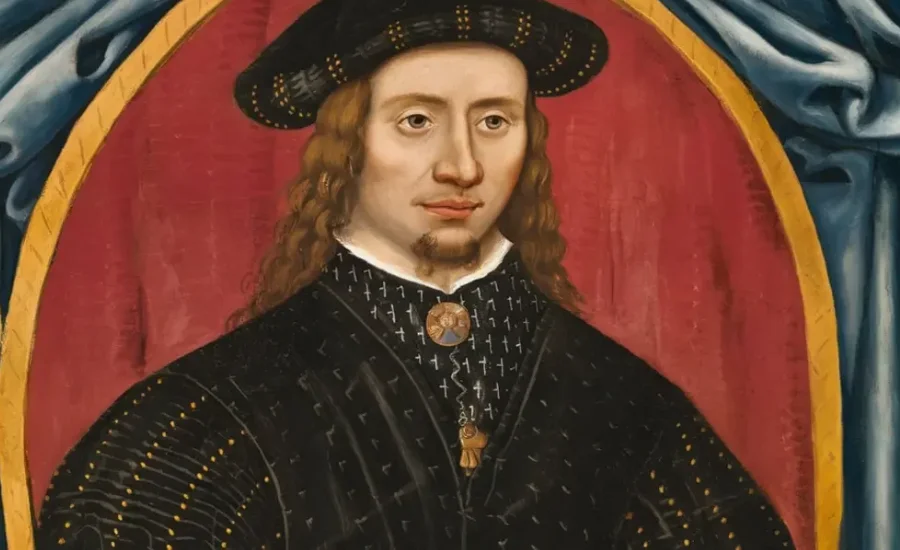Heinrich Servais 1555, a figure often overlooked in the annals of history, played a critical role in shaping Renaissance thought. Emerging as a mathematician and philosopher during the mid-16th century, Servais exemplified the Renaissance ideal of intellectual curiosity. The year 1555, in particular, stands out as a turning point, both for European politics and for Servais’ career. While the Peace of Augsburg marked a significant moment in the religious landscape of Europe, Heinrich Servais was quietly contributing to the growing body of knowledge that would propel Europe toward the Enlightenment. Servais’ work, although lesser known today, had far-reaching implications for mathematics, humanism, and the evolution of scientific thought.
Heinrich Servais: A Renaissance Man
Born into a period of rapid intellectual expansion, Heinrich Servais embodied the Renaissance spirit. He was a scholar, philosopher, and mathematician, deeply influenced by the revival of classical learning that defined the era. His engagement with humanist principles, combined with his mathematical prowess, allowed him to contribute to a wide range of fields. Servais was not just an academic; he was a thinker whose ideas helped lay the groundwork for modern scientific inquiry.
This was a time when philosophers engaged with mathematics, scientists delved into theology, and artists explored geometry. Servais stood at the intersection of these developments, bringing a logical, mathematical approach to philosophical debates and offering new perspectives in both fields. His contemporaries, including figures like Johannes Kepler and Gerolamo Cardano, respected him for his contributions to this dynamic intellectual climate.
Early Life and Education
His education likely included a classical curriculum, with a focus on Latin, rhetoric, and logic—subjects central to Renaissance humanism. It was during his formative years that Servais likely encountered the works of ancient Greek and Roman scholars, whose influence is evident in his later work.
Servais may have studied at one of the prominent universities of the time, such as the University of Paris or the University of Louvain, both of which were centers of humanist learning. His exposure to the latest mathematical and philosophical ideas would have shaped his intellectual development and prepared him for the pivotal role he would later play in advancing Renaissance thought.
1555: A Pivotal Year in European History
The year 1555 was a watershed moment in European history, particularly due to the signing of the Peace of Augsburg. This treaty brought temporary religious peace to the Holy Roman Empire, allowing princes to choose between Catholicism and Lutheranism for their realms. While the political landscape shifted, Heinrich Servais was making strides in his academic pursuits, contributing to the intellectual currents that were driving Europe toward the scientific revolution.
This period saw a growing interest in empirical observation and mathematical precision. Scholars like Servais were instrumental in applying mathematical concepts to various scientific inquiries, challenging the long-standing dominance of Aristotelian philosophy. Servais’ work during this time reflected the broader trend of questioning established knowledge and seeking new ways to understand the natural world.
Contributions to Mathematics
Heinrich Servais is best remembered for his contributions to mathematics, particularly in the fields of algebra and geometry. His work was characterized by a rigorous approach to problem-solving, blending mathematical theory with practical applications. Servais’ innovations helped to bridge the gap between medieval mathematical traditions and the emerging modern approaches that would later dominate the field.
One of Servais’ key contributions was his exploration of algebraic equations. His methods for solving complex equations laid the groundwork for future advancements in algebra, influencing later mathematicians such as François Viète and René Descartes. Servais’ work in geometry also demonstrated his ability to apply mathematical principles to real-world problems, a hallmark of Renaissance mathematics.
Heinrich Servais and Renaissance Humanism
Humanism encouraged scholars to look beyond religious doctrine and explore secular knowledge, and this intellectual freedom allowed Servais to make significant strides in his mathematical and philosophical endeavors.
Servais’ approach to mathematics was distinctly humanist in its emphasis on logic and critical thinking. He believed that mathematical principles could be applied to a wide range of intellectual pursuits, from philosophy to the natural sciences. This interdisciplinary approach was a defining characteristic of Renaissance humanism, and it allowed Servais to make contributions that transcended traditional academic boundaries.
Servais’ Influence on Scientific Thought
Heinrich Servais was not just a mathematician; he was a thinker whose work influenced the broader scientific community. His mathematical innovations, particularly in algebra and geometry, were adopted by early scientists who sought to apply these concepts to their own research. Servais’ work helped to lay the groundwork for the scientific revolution, which would see figures like Galileo Galilei and Johannes Kepler use mathematical principles to unlock the secrets of the universe.
Servais’ emphasis on empirical observation and mathematical precision was a significant departure from the more speculative approaches that had dominated medieval science. His work demonstrated the power of mathematics as a tool for understanding the natural world, a principle that would become central to the scientific revolution.
Mathematical Works of Heinrich Servais
The mathematical works of Heinrich Servais are essential to understanding his contributions to Renaissance thought. Although many of his writings have been lost to history, surviving records indicate that he made significant advancements in algebraic theory and geometric applications. His work on algebraic equations, in particular, helped to refine the methods for solving polynomial equations, which would prove crucial for later mathematicians.
Servais also made contributions to geometry, particularly in the study of conic sections and their applications. His work in this area was closely aligned with the interests of other Renaissance mathematicians, who sought to apply geometric principles to fields as diverse as astronomy and architecture. Servais’ mathematical works demonstrate his commitment to rigorous logical thinking and his belief in the practical applications of mathematical knowledge.
Conclusion
Heinrich Servais may not be as well-known as some of his contemporaries, but his contributions to Renaissance thought were significant. As a mathematician and philosopher, Servais helped to advance the fields of algebra and geometry, laying the groundwork for the scientific revolution that would follow. His interdisciplinary approach, combining humanist principles with mathematical rigor, exemplified the intellectual spirit of the Renaissance. Today, Servais’ legacy endures in the continued relevance of his mathematical innovations and his influence on the development of modern science.
FAQs
Who was Heinrich Servais?
Heinrich Servais was a Renaissance mathematician and philosopher, known for his contributions to algebra and geometry. He played a key role in advancing mathematical thought during the mid-16th century.
What was Heinrich Servais’ role in the Renaissance?
Servais embodied the Renaissance ideal of intellectual curiosity, contributing to both mathematics and philosophy. His work helped bridge the gap between medieval and modern thought.
What were Heinrich Servais’ key contributions to mathematics?
Servais made significant advancements in algebra, particularly in solving polynomial equations, and contributed to the study of conic sections in geometry.
How did Heinrich Servais influence the scientific revolution?
Servais’ mathematical work laid the groundwork for later scientists, such as Galileo and Kepler, by emphasizing empirical observation and mathematical precision.
Was Heinrich Servais connected to other Renaissance intellectuals?
Yes, Servais was part of a broader intellectual network that included figures like Johannes Kepler and Giordano Bruno, contributing to the exchange of ideas during the Renaissance.
What is the legacy of Heinrich Servais?
Servais’ legacy lies in his contributions to mathematics and his influence on the scientific revolution. His work helped to shape the intellectual landscape of Renaissance Europe.
Conclusion
Heinrich Servais may not be as well-known as some of his contemporaries, but his contributions to Renaissance thought were significant. As a mathematician and philosopher, Servais helped to advance the fields of algebra and geometry, laying the groundwork for the scientific revolution that would follow. His interdisciplinary approach, combining humanist principles with mathematical rigor, exemplified the intellectual spirit of the Renaissance. Today, Servais’ legacy endures in the continued relevance of his mathematical innovations and his influence on the development of modern science.











